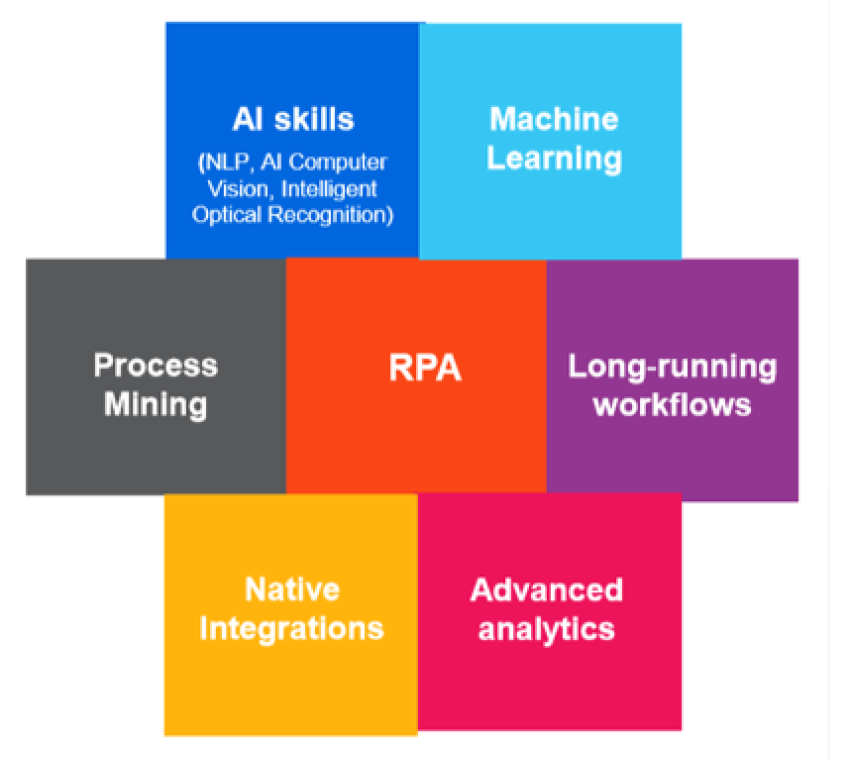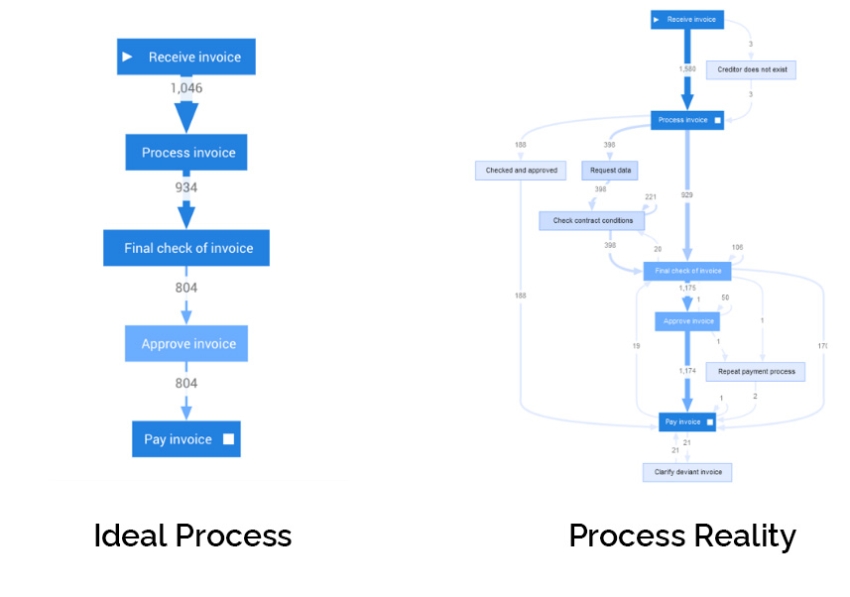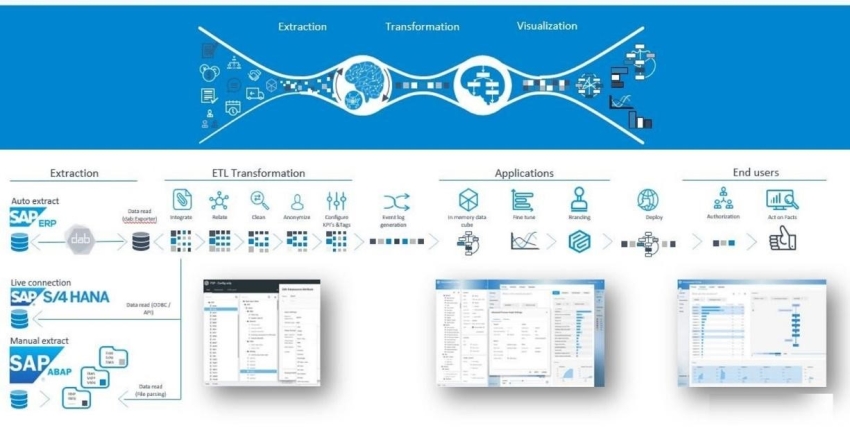
Truly understanding what is going on with an organization's processes can be a great challenge!
According to Gartner, Hyperautomation (or Intelligent Automation) is an emerging new changing concept considered of highly importance to increase a business efficiency and competitivity. Combining RPA and AI technologies opens up a whole new perspective of automation that was not possible before.
UiPath Enterprise approach commits to offer a complete set of technological solutions to complement a robust and mature Robotic Process Automation (RPA) platform and, consequently, complete the process automation life cycle by becoming a fully Hyperautomation platform:

Process Discovery is starting point towards a complete end-to-end automation approach. And this is the stage where we need to really deep-dive and understand each business process in detail. And we can do that more accurately than ever today, by using Process Mining tools!
Process mining it thus becomes a key element step in Hyperautomation overview as an increasing number of business worldwide are integrating this technology. In fact, its importance to transform a business in a fully Hyperautomation is recognizable as different technological platforms are starting to integrate existing Process Mining business in their technological portfolio, such as Microsoft.
What Process Mining is bringing to the table
Until now, a business process team was in charge with process improvement and optimization. But now, business users are increasingly becoming curious and involved in their own processes to understand if it is suitable to the business needs or if any problem occurs.
Since Process Mining records a business process from start to finish (e.g. path from receiving an invoice until the invoice is paid), it reveals the various activities the process goes through. It will give the end user the notion the efficient and inefficient sections of the process by giving an insight into bottlenecks and unnecessary repetitive processes.
Why business organizations invest in Process Mining
One of the reasons is to fully understand their own processes. Usually end users don’t have a full picture of the complete workflow path. In the example bellow, UiPath Process Mining will present the multiple deviations that can occur from when an employee receives an invoice until the invoice is paid. The platform presents the path in a visual way, with all the logs require to understand what is happening, when and where, where the process is more efficient and where are the bottlenecks.

Since it’s an integral part of UiPath, Business users also implement Process Mining since it allows the end user to monitor the process. After detecting the bottlenecks, the request for a change in the process is sent to the Center of Excellence to update or create an automation workflow using RPA techniques. After the changes are implemented it’s possible to monitor the impact on the end-to-end process. In this way, it is possible to check if there are improvements after those changes and compare the before and the after. This comparison is presented in a quantitative approach, for example, how many hours where saved by implementing a change.
Finally, Process Mining is used to improve the process further on. After correcting a bottleneck, Process Mining presents the next bottleneck that needs to be improved.
Consequently, Process Mining work should be continuous: Find a problem, correct it, monitor it. Find another problem, etc.
Steps in UiPath Process Mining
UiPath Process Mining is divided in three main stages:
Extraction: Access process data from your ERP, BPM or CRM systems
Transformation: Add Tags and KPI’s to data to align outcomes with strategic business goals
Visualization: Obtain a fact-based representation of complex processes, showing all inefficiency and risk
UiPath [Process mining is like an x-ray for your company]

By connecting directly to a data sources, such as SAP, Oracle and Salesforce, UiPath Process Mining is able to present to the end user the end-to-end process. The data is then transformed so all the bottlenecks, deviations and inefficiencies are presented to the end user in a form of dashboard. This will allow the end user to visualise the parts that require improvements, and how to approach them when requested for automation.
Additional to the data extraction, UiPath Process mining adds business value to the raw data, before it presents the results in form of a dashboard.
- Tags are the way of indicating, for example, important KPIs for the business. For example, a way to check if the three activities sequence occur in a different order for a case: “Receive invoice" - "Check received invoice" - "Final check of invoice". This can tell the business owner which Case doesn’t follow the standard and fix the reason why.
- Universal model with a Case ID - main item the business wants to pursue, for example in a “Purchase-to-Pay” Process, the Case ID would be the “Purchase Order No.” - an activity - linked to the item/Case ID - and timestamp (event). With those three main attributes, it allows to break the business model and construct a story of the whole project.
Global overview
In summary, while RPA will help the business by cutting off the repetitive, low value-add and tedious work, Process Mining accelerates the automation flywheel by providing:
- A full overview of end-to-end processes;
- Continuous monitoring;
- An easy way to analyse in detail all the problems/activities that can or should be optimized.


